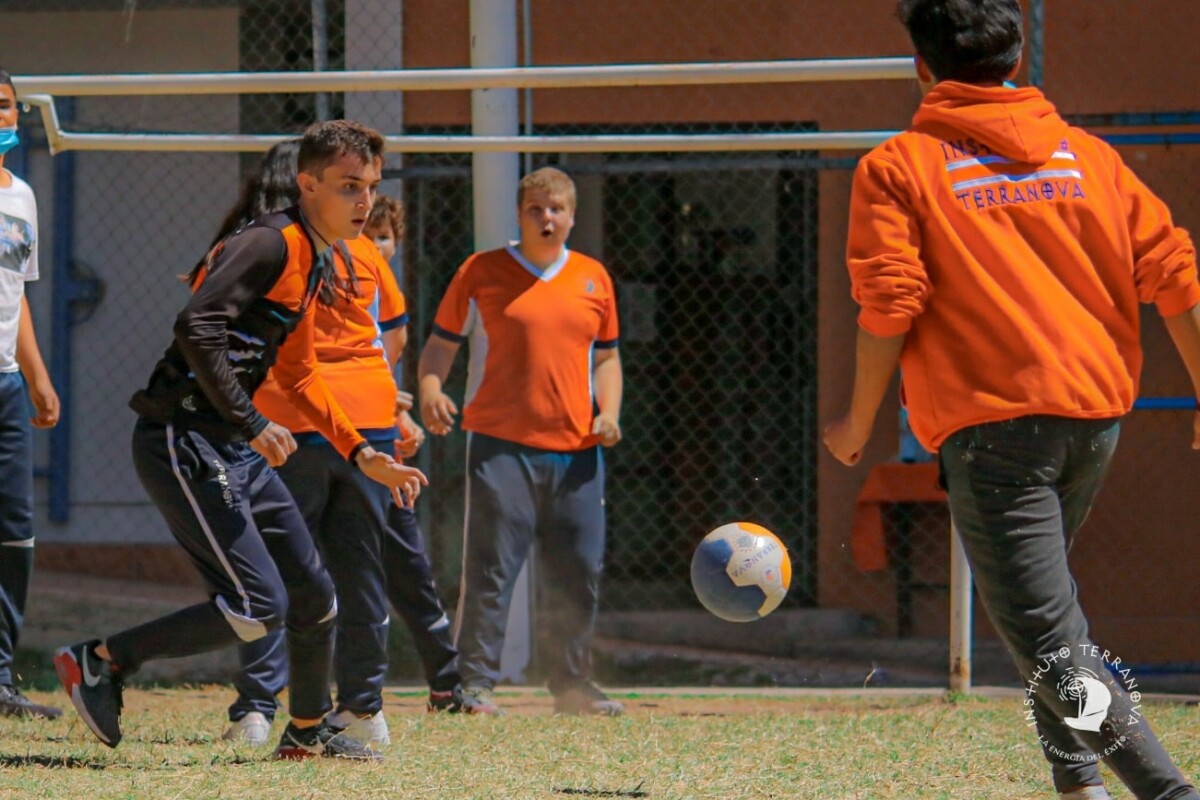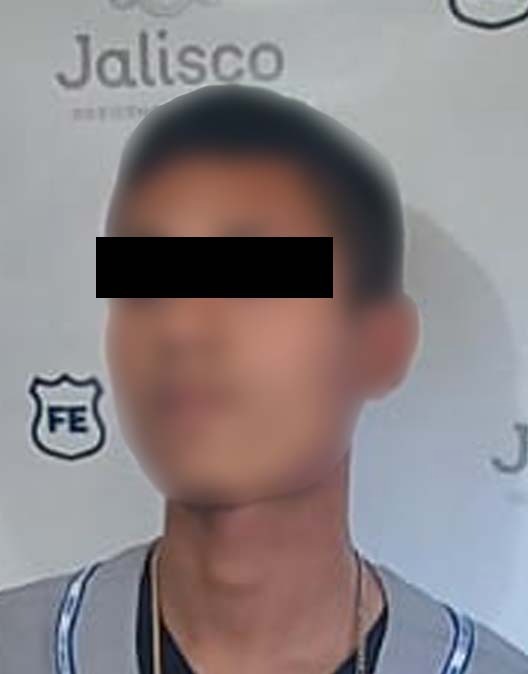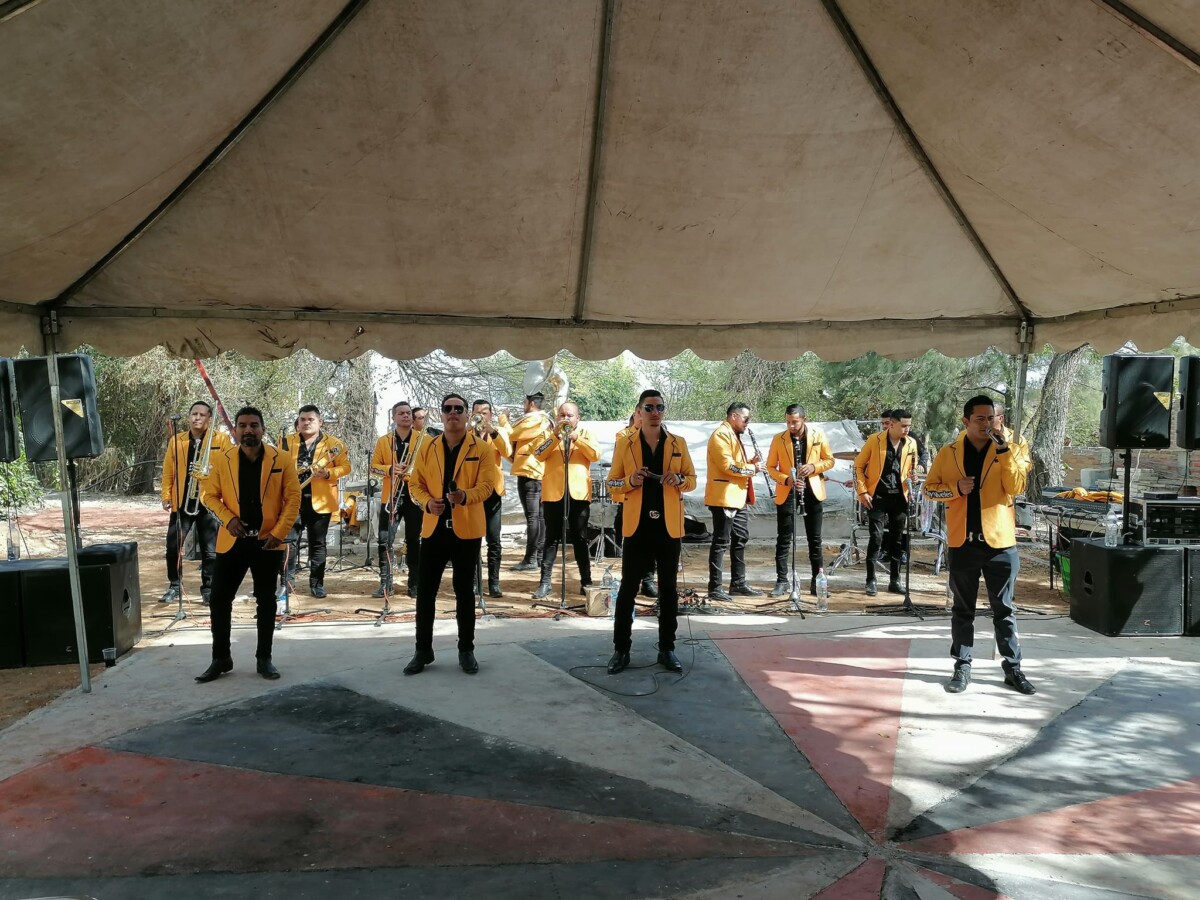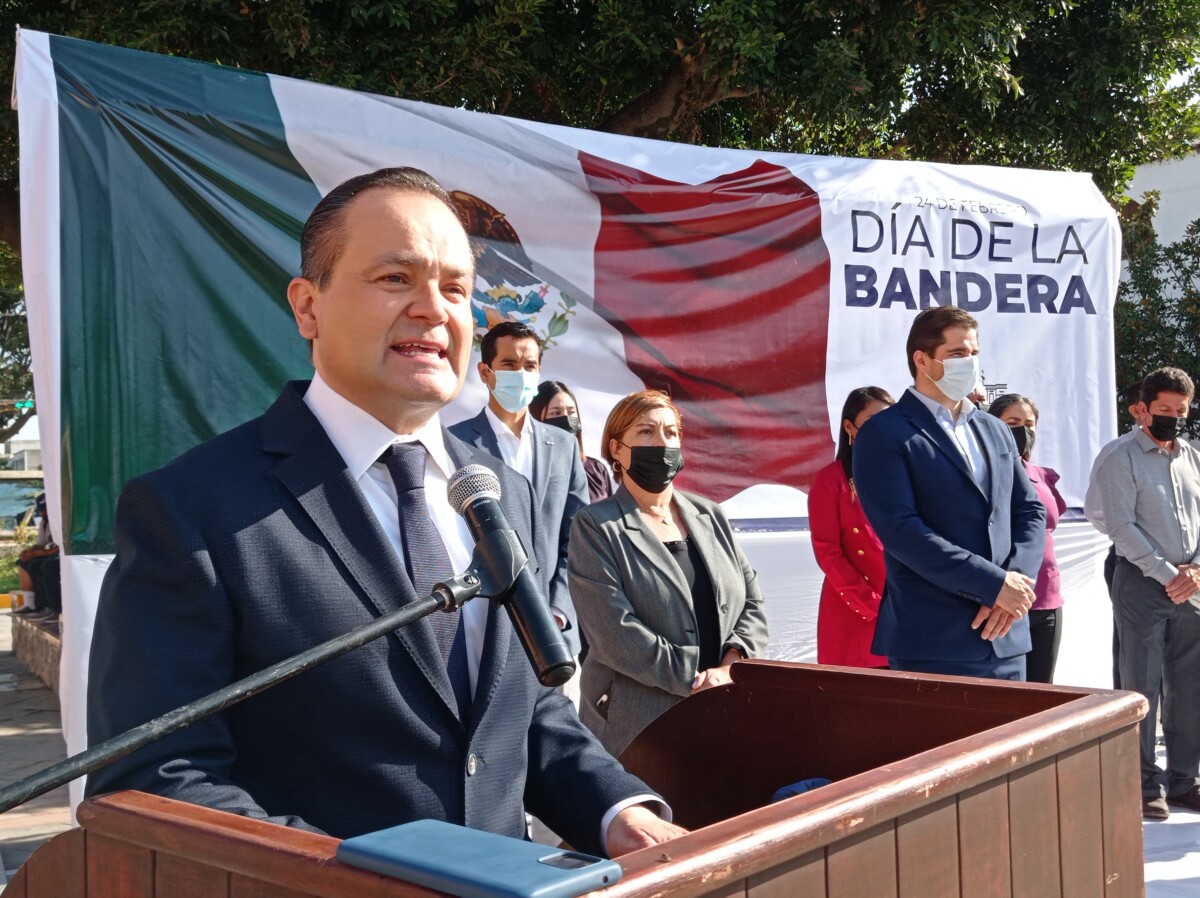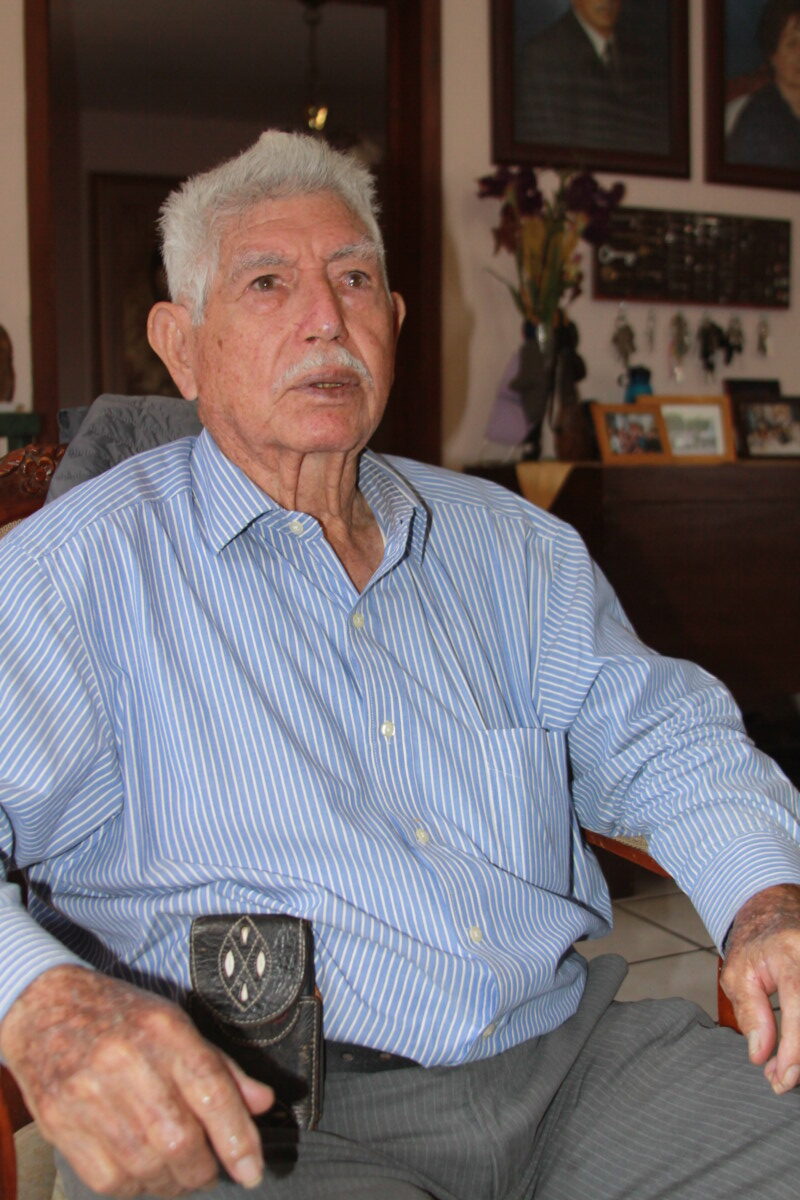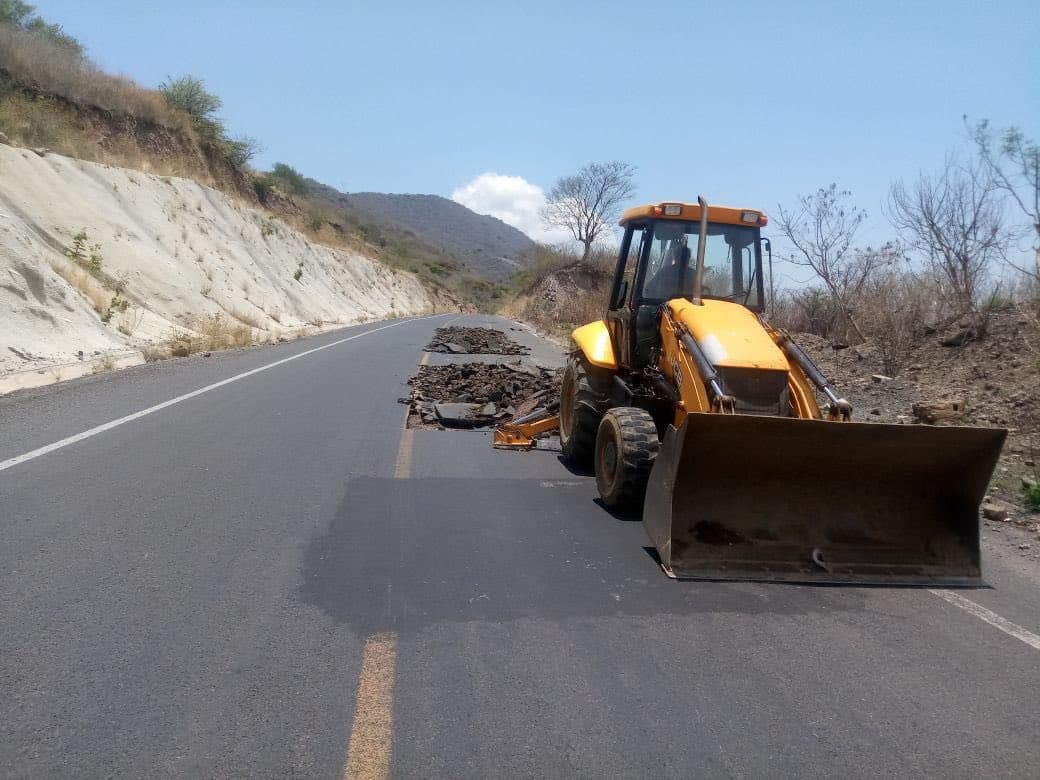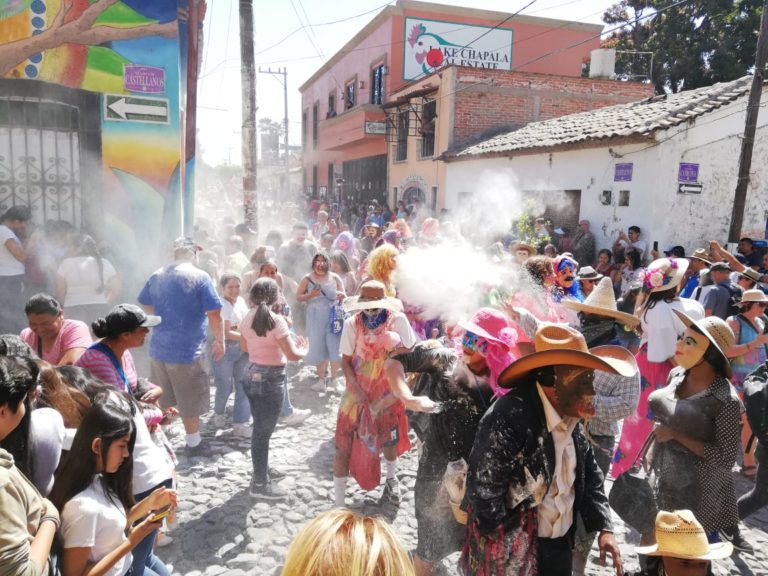en inglés
Terranova 2022 Inter-School Soccer Tournament kicks off
Students and teachers of the Tarranova Institute will face each other in the Terranova 2022 Inter School Tournament, at the school’s facilities. Photo: courtesy.
Editor. – High school and middle school students and teachers of the Terranova Institute kicked off the Terranova 2022 Inter-School Soccer Tournament, which will last seven weeks starting on Tuesday, February 22.
The tournament will have a regular phase of five weeks and two weeks for the semifinals and finals, with six mixed teams, each with five players.
In the first match, Los Bichos defeated Los Cuervos, five to zero. In the second match, the Bomboneros won over the Leñadores Terra, two to zero; and to finish the first day, the teams Naranja Mecánica and Los Negros tied two to two.
Translated by Sandy Britton
Health & Wellness
By Leticia Trejo
Like many people, I have a chat room made up of high school classmates, all of us between 54 and 55 years old. Our childhoods and teenage years were very similar: same economic group, same family environment, similar education and lifestyle. However, five of these classmates died of Covid-19, some in a very painful and distressing way, and others fared very poorly during the illness. They were apparently healthy before they became infected, but I am sure that was not true.
If anything has become clear to us with this virus, it is that the vast majority of people who became very ill had one or more latent ailments that had not yet manifested themselves. If we translate as STRENGTH the resistance of the immune system, then, in reality, people who do badly or very badly with this illness are not strong.
In the physical practice of hatha yoga there is a small group of asanas (postures) that are called Warriors 1, 2 and 3. In Sanskrit they are Virabadrasana, honoring a respected and admired Warrior named Virabadra. These asanas are challenging on a muscular and endurance level; the mind begins to despair at the physical challenge and becomes agitated and restless, struggling to get out of the posture. With perseverance and discipline, we can realize that the mind struggles less and less and concentrates more, and that the muscles respond better, achieving states of mindfulness. The person feels this and knows that he/she has developed integral strength, mind and body in synchrony.
I tell my students that warriors or soldiers, in real life, are always prepared, even if there is no war, even if there is no conflict. They continually train, physically and mentally, to have an efficient command and be ready in case it is necessary to confront the enemy. Avoiding physical pain while training the muscles, avoiding what they do not like, has no place in the thinking of a warrior. On the contrary, entering into the discomfort of discipline, transcending the restlessness of the mind and achieving good emotional and physical governance lead to guaranteed success in facing challenges.
The discipline of physical activity is a test of self-mastery; if we add to that the component of self-reflection and recognition of our thought patterns, then we are warriors and we are strong. If we were really strong, if we would get Covid-19 there would be a much better chance of staying alive and avoiding the devastation that we can see in the bodies of a large number of people who have suffered from this condition.
Up to what age can you be a Warrior?
When I started the Classes for the Tercer Edad (Third Age – people 60+ years old) project, this discipline was not taught in any gym in Guadalajara, so I had no reference to the success or failure that could result from these activities. I was scared to death when I received my first student, Don Pedro. He was 82 years old and had eleven children. He sent all of them to university and also took care of his sick wife for ten years. He came to the class with a cane and could hardly do any of the exercises I taught him. But thanks to his discipline and good spirit, a year after starting this activity, Don Pedro left the cane, eliminated his abdominal fat, became more agile and became independent (when I met him he lived at the house of one of his daughters who did not let him do anything, because he was so «old»).
So I invite you, dear reader, to ask yourself the question: What if you were really strong? And in answering, may you find areas of opportunity that will give a positive turn to your health and well-being.
Translated by Sandy Britton
Young man arrested for possession of drugs in Chapala
Braulio Esteban «N», was arrested in the Santa María de Chapala neighborhood.
Braulio Esteban «N», 18 years old, was arrested in Chapala when he was found carrying nine packets of the drug known as «Crystal.” The arrest was made by officers of the State Security Secretariat (SSE).
The incident took place at the intersection of Chacales and López Mateos streets, in the Santa María neighborhood, where state police officers on surveillance duties arrested Braulio Esteban «N».
Among his belongings, the agents found nine «Ziploc» type bags with the drug, for which he was sent to the Public Prosecutor’s Office for investigation.
Translated by Colleen Beery
Eva Longoria visits Mezcala
Eva Longoria in Mezcala de la Asunción.
Eva Longoria, an American actress of Mexican descent, visited Mezcala de la Asunción, on the shores of Lake Chapala on February 24th.
Longoria is working on a project to film CNN’s “Buscando a México» , a series about Mexican food, which will premier later this year. During her visit to the Riviera, the actress was at the restaurant Paraje Insurgente and filmed some scenes on the island of Mezcala.
She was also captured eating a torta ahogada in the city of Guadalajara as part of the production. The actress will travel much of the nation for the project.
Translated by Christalle Dalsted
Chapala sailor Elena Oetling Ramirez places fourth in the US Open Series
Photo of Elena Oetling Ramirez during her competition in Clearwater, Florida. Credit: Elena Oetling
Chapala sailor Elena Oetling Ramirez placed fourth in the US Open Series in the ILCA 6 women’s category. She previously competed in the Tokyo Olympic Games.
This first event of the year was held from February 3rd to 6th in Clearwater, Florida. She said that this event served as preparation for other international competitions later in the year, «this regatta is a good starting point, to evaluate where I am, and what to work on in the following months to prepare for the events coming up for the rest of the year.»
Oetling Ramirez finished behind Christina Skellaris (USA) who took first place, followed by Charlotte Rose (USA) in second place, and Coralie Vittecoq (Canada) in third place.
Translated by Amy Esperanto
Bands to play to liven up charro events during Carnival
Banda Auténtica de La Barca, will entertain the crowd during the closing of carnival, March 1, 2022. Photo: La Barca Authentic Band
Sofía Medeles (Ajijic).- The Association of Charros will celebrate the Carnival of Ajijic, from February 27 to March 1, 2022 with equestrian and bull roping, riding, and tying events enlivened by musical groups in the charro ring.
Ernesto Perez Reyes, the current president of the association, extended an invitation to the general public to attend the events. Tickets will be sold at the box office and the events will begin at 4:30 in the afternoon.
On the first day of the carnival, Sunday, February 27,2022, the groups that will perform will be Banda Perla Azul de Cuexcomatitlán, La Equidad Norteña, and Banda Estrellas del Lago. Tickets will cost 150 pesos per person.
On Monday February 28, Banda Nueva Casta and Santiago Guzmán y su Astro Norteño will perform. Tickets will cost 100 pesos. Closing the carnival at the charro ring on March 1 will be Banda del 70 and Banda Auténtica de La Barca. The cost of tickets for this final celebration is 180 pesos per person.
Perez Reyes asked that attendees wear masks at all times, and to refrain from going if they have symptoms of Covid-19.
«In this ongoing pandemic situation, the guidelines and restrictions will be respected. It is this observation of COVID protocols that has allowed us to celebrate the carnival, albeit responsibly,» he concluded.
Translated by Rebecca Zittle
The mayor urges all to foster peace on Flag Day
The Mayor of Chapala, Alejandro de Jesús Aguirre Curiel, made a call to the citizens to work for a culture of peace.
Editor – The mayor of Chapala, Alejandro de Jesús Aguirre Curiel, urged the citizens to work for a culture of peace that leaves behind violence and useless bloodshed during the commemoration of Flag Day, on Thursday, February 24.
The municipal president, accompanied by directors and councilors of the administration, stressed that we must «work for a culture of peace that leaves behind violence and useless bloodshed. May the National Flag not only be a symbol that identifies us in the world, but a symbol that unites and brings us together.»
During the civic act that took place in the square located in front of the City Hall building, elements of the Municipal Police Department hoisted a large Mexican flag on its flagpole that unfortunately did not wave in the wind, because the air was still on that sunny morning.
Alluding to the emblematic colors of the national flag, the mayor spoke of recovering the green of hope and working to make it meaningful. He said, «Let’s move from conformism to action» and pointed out that we have to recover unity as one people and be as one family.
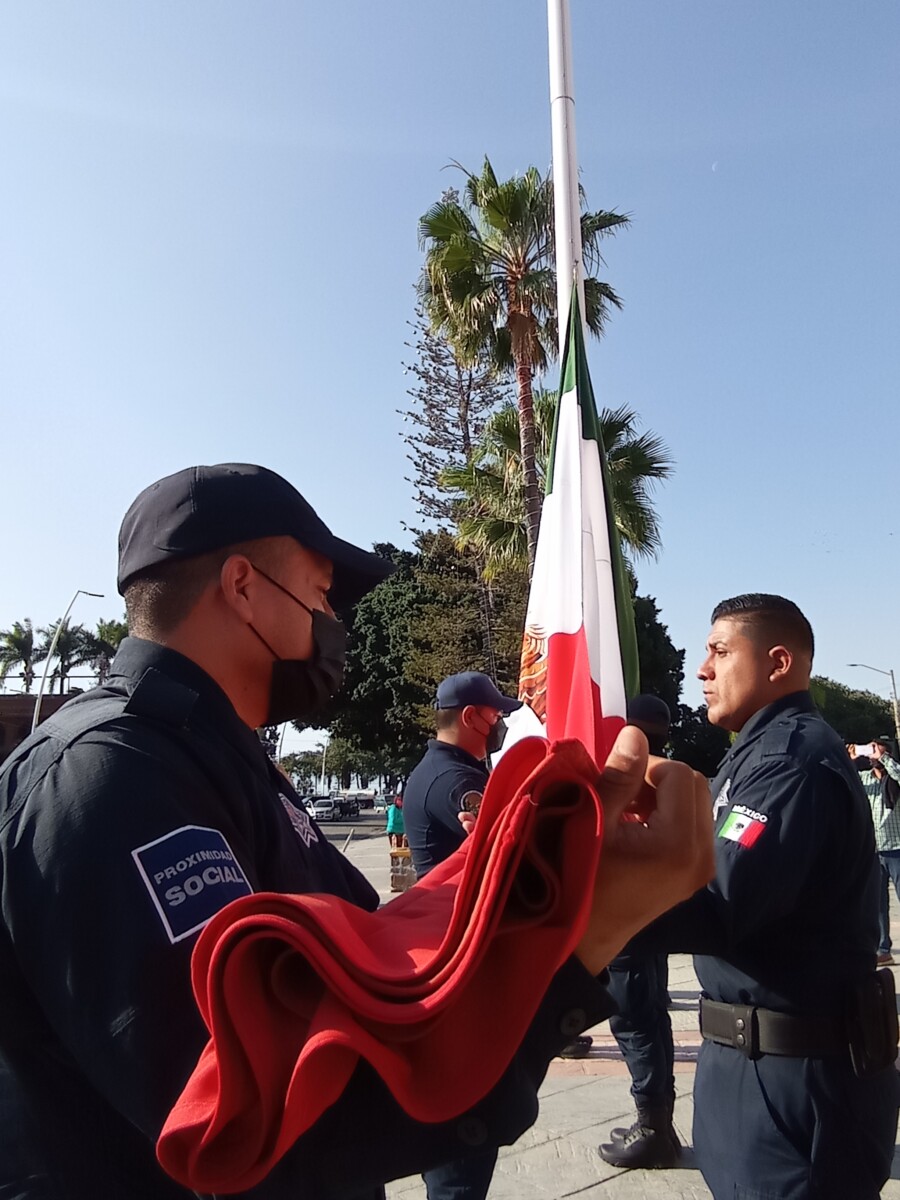
Elements of the Municipal Commissariat raised a large Mexican flag on its flagpole, unfortunately it did not wave in the wind, as the air was still on a sunny morning.
He also called on his team to commit themselves to fulfill the obligation they have with the people of Chapala and to bring unity internally and externally, in addition to seeking the balance and unity that the citizens have asked for so much.
«We need to know that the task we perform is very short and when we least expect it, we will be leaving. Let’s not get carried away by ambitions, let’s not get carried away by bad advice. The administration needs committed people…», he said. Likewise, the mayor reiterated his commitment and gratitude to the citizens for having entrusted him to lead the administration for the second time.
The municipal president ended his speech with the desire that the colors of the National Flag once again symbolize peace, magic, the flavor of traditions, culture, gastronomy and the greatness of being Mexican.
Translated by Colleen Beery
Lakeside Chronicles
Marcos Cortez Gómez is a great conversationalist about the memories he keeps of Jocotepec. Photo: María Reynozo.
María del Refugio Reynozo Medina (Jocotepec).- Jocotepec is one of the great loves of Marcos Cortez Gómez. In his living room with his mementos hangs a copy of the oath he swore to the patron saint Señor del Monte or Lord of the Mountain, for whom he has a special fervor. Cortez Gómez is a member of the Guard of Honor.
There are also portraits of his parents and him and his wife Juana de la Torre, who opened the first clothing store in Jocotepec in 1965. They had seven children, 15 grandchildren and 10 great-grandchildren.
Nearing his ninetieth birthday, Marcos remembers the Jocotepec of his youth and one of the celebrations, the carnival for the bullfights of bygone days. “It was a most beautiful celebration,» he says, smiling nostalgically.
The carnival festivities began on Saturday and ended on Tuesday. Every day began with the mañanitas, the popular Mexican song sang on special days like saint days or birthdays, with a band playing in the streets. The invitation to the carnival began at eleven o’clock in the morning. This was a parade of the riders who were going to participate in the bullring with some tame bulls in the middle of the procession. The parade ended at the bullring. This parade was traditionally called the “toro de once” or bulls of eleven, so-called because the parade started at 11:00 with eleven bulls. They held tryouts to see which bullfighters were going to fight in the afternoon. At the bullring they welcomed bullfight sponsors from Zacoalco, Navajas, Ahuisculco, San Pedro and Zapotitán.
The famous Ignacio Zaragoza Band from Jocotopec played classical and popular music. The promoter, Rodolfo García Ibarra allowed his house to function as a rehearsal hall. The evenings ended with a serenade and dance.
At the serenade the women would turn one way and the men the other. There was an exchange of flowers or decorated, perfumed bouquets between girls and boys. Cortez Gómez remembers that while the band played El Papaqui, they would break the eggshells stuffed with confetti on the girls and their friends and they would throw streamers and confetti at them.
The queen of the carnival was crowned on the last day. The municipal president or the group of charros (horsemen) selected the lucky girl and her two princesses. All were accompanied by their escorts. The royal court made their entrance to the bullring in a carriage, went around the ring and then settled in their box of honor that had been prepared for them. They awarded the participants bands made with colored ribbons. Cortez Gómez was given a sash, and he had great pleasure showing off that trophy to his friends and the girls.
The bullfights were at four o’clock in the afternoon. Sometimes the bullfighters came from outside Jocotopec and at other times, spontaneous bullfighters appeared and at the moment they ventured into the ring they became sometimes not so lucky bullfighters. The güero (blonde) Loza, was one of the bullfighters originally from Jocotepec.
At the bullfights there was no lack of clowns with their jokes. One clown named Candelario, came from Pueblo Nuevo. Another clown was nicknamed La rata (the rat). The clowns had a great ability to compose jokes on the spot, Cortez Gómez still remembers:
The girls of Jocotepec, they are like the otate flower.
Very good at making boyfriends, but bad at using the metate [to grind corn].
Another joke was:
Don Fulanito de tal is a very brave man,
He keeps looking at his leg from underneath the platform.
Once the festivities of Shrove Tuesday [Fat Tuesday] were over and Ash Wednesday arrived, there was no more talk of bullfighting or festivities. They said goodbye to joy as bullring wooden beams were dismantled.
Cortez Gómez likes dancing and singing very much. He sometimes shared meals and songs with his friend, the singer Jorge Valente. They loved each other like relatives, even though they were not. The composer Gilberto Parra was his cousin.
Don Marcos is a great conversationalist who also composes music while narrating a story. He raises his voice to sing.
I’ll wait for you under the camichin trees, where the trucks go by
To go far away to unite our hearts.
I swear to you that our love will remain forever.
Cheer up chaparrita, you’ll see that you won’t regret it.
He has has written three ranchera songs that he keeps for himself.
he keeps remembering and raises his voice to sing with emotion:
Tonight, with the moon I sing you my illusions,
I swear to you that my love is with good intentions.
«I am very grateful to God for having let me be born here and live here, in the land of my love,” he affirms without concluding, because Don Marcos Cortez Gómez has many memories that he would not finish telling.
Translated by Nita Rudy
Finally! Total rehabilitation of the Jocotepec Beltway announced
Since its construction, the beltway has had failures; currently, potholes and unevenness make it almost impassable. Photo: Archive.
Héctor Ruiz Mejía (Jocotepec).- The work for the rehabilitation of the five kilometers of Jocotepec’s beltway has been authorized, announced the municipal president José Miguel Gómez López.
Through a video posted on his social networks, the mayor, who visited the offices of the Secretariat of Infrastructure and Public Works of Jalisco (SIOP) accompanied by General Director of Road infrastructure Omar David Paredes Flores, said that the state government approved «a large investment» for the repair of the road.
The purpose of the project is to restore the very uneven stretch that extends for five kilometers and that, since its creation in the 2007-2009 administration, was a «poorly done work» that only a year after its inauguration developed so much unevenness and potholes that it has become impossible to travel on, said Gómez López.
«We are talking about a section of road that is going to be totally fixed, since it was built with many deficiencies and there are flaws and conditions that are unsafe for anyone traveling along it».
The president announced that the work will begin this year and, although the amount to be invested has not yet been specified, he explained that the bidding processes are already active and that «it will be a significant amount» of money.
The Libramiento de Jocotepec has received several minor repairs, the last one in August 2020, when 500 thousand pesos were spent to repair a dangerous sinkhole.
Finally, in the same video, José Miguel Gómez also announced the rehabilitation of the three kilometers of the Huejotitán intersection, especially at its junction with the Guadalajara-Morelia highway.
Translated by Patrick O’Heffernan
Ajijic Carnival will maintain the same route and schedule
During the Shrove Tuesday parade, the sayacas, the main character of the festivities, throw flour and confetti at the spectators. Photo: Carnival 2019 (Archive).
Sofía Medeles(Ajijic).- Despite the modifications imposed by health authorities to combat the Covid-19 pandemic, the Ajijic Carnival will keep the usual schedule and route of the celebrations.
Acting Delegado Maximiliano «Max» Macías Arceo announced that there will only be three days of festivities: the parades on February 27 and 28 and the Shrove Tuesday parade on March 1.
On Sunday and Monday, the sayacas, the main character of the festivities, will leave at 11:00 a.m. from the Campos family home, located on Hermenegildo Galeana Street between Zaragoza and Ocampo. They will take Zaragoza, Álvaro Obregón and Ocampo streets until they reach La Floresta in the east of the town. This year the Charros Association decided to omit the traditional «toro de once» and the reception or refreshment to avoid crowds.
The Shrove Tuesday parade will also begin at 11:00 a.m. crossing the town on Ocampo, passing by the «Seis Esquinas» square, and taking Hidalgo to end at the main square of Ajijic.
Max Macías said that at least ten floats will participate, without ruling out the possibility of others joining in.
«Few signed up, but some let me know of their participation informally. The parade floats will be arranged according to the order of registration to maintain order,» he added. In addition, he asked parade attendees to wear masks, as well as to try to disperse as soon as the parade passes.
«The Board of Health of Jalisco put restrictions on events and far from ignoring them, we must make an effort to follow them. We are reviving traditions little by little and we want to do things right», said Max Macias
Translated by Patrick O’Heffernan
© 2016. Todos los derechos reservados. Semanario de la Ribera de Chapala
